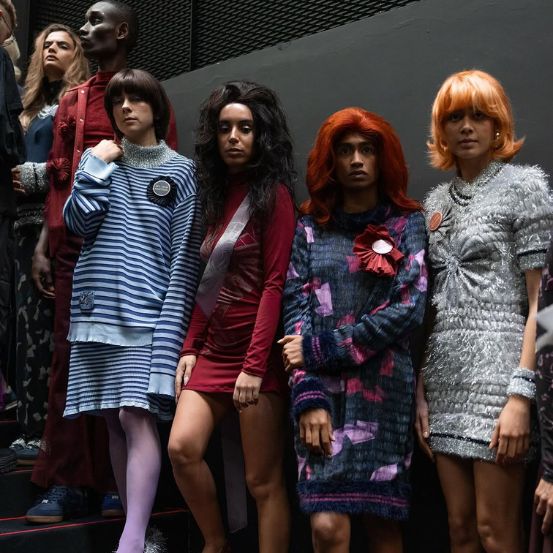Friends call it CBD, but its family name is cannabidiol. If this word seems difficult to pronounce, it was even more difficult to integrate it into a beauty product formula without prejudice. Nevertheless, in the cosmetics industry, CBD is here to stay.
Friends call it CBD, but its family name is cannabidiol. If this word seems difficult to pronounce, it was even more difficult to integrate it into a beauty product formula without prejudice. Nevertheless, in the cosmetics industry, CBD is here to stay.

It's natural. It's vegan. It's antioxidant. And it's multifunctional. At first glance, CBD has everything it takes to be a star ingredient in the contemporary cosmetics industry. There is only one small problem: it carries decades (or centuries) of prejudice on its back, which makes its integration into the market slow and full of obstacles. And before it is possible to think otherwise, let’s make it clear that these obstacles are not, for the most part, legal. Since 2020, the use of CBD in cosmetic products has been allowed in the European Union, provided certain criteria are met. So, currently, this is not the biggest obstacle - not least because laws can change from one day to the next, but mindsets cannot. Even so, several experts believe it's time to demystify the true potential of this ingredient, which will bring so much positive value to the beauty routines of many of us.
Let’s begin by addressing the biggest prejudice of all, based on a misconception of what constitutes CBD. In a nutshell, cannabidiol is an active substance found in various species of cannabis and hemp (these plants are derived from the same species, Cannabis sativa, which is cultivated all over the world, but with special concentration in warm and temperate climates). Also present in these plants is THC, also known as tetrahydrocannabinol, which is the true responsible for the negative - or positive, depending on the perspective - connotations associated with the consumption of cannabis. Known for its psychotropic effects, this is the famous active component which reproduces in the brain a feeling of euphoria. Although it has a similar chemical structure to THC, the impact of CBD is completely different, because when consumed separately, this ingredient cannot connect to the brain receptors that alter the state of consciousness. In short, and to answer the question that scares so many people: the use of CBD products, which include cosmetic products, does not produce the same effects as smoking marijuana. In beauty, we could more easily compare the effects of cannabidiol to those of our favorite serum.
Although it is the most well-known, CBD is only one of more than a hundred active ingredients - referred to as cannabinoids - that can be found in Cannabis sativa species. The fact that so much attention is being paid to it is due to the properties that have been discovered in this component. And these properties are not restricted to the beauty sector. Quite the contrary: they spread across the entire wellness industry, from psychotherapy, for example, for the control of anxiety and depression, to sleep hygiene, where significant progress has been recorded in alleviating insomnia. In the cosmetic area, the benefits are extensive. Therapeutic effects are maintained, such as the promotion of a state of calm and relaxation, essential to any nocturnal skin care routine. To these are added qualities directed to the treatment of some of the most common facial problems, among which stand out the excess oiliness or hyperpigmentation. This is because the cell receptors present in cannabidiol help balance several skin functions, such as sebum production and melanocyte production (which, in turn, are responsible for the production of melanin, affecting problems such as spots and redness). In addition, CBD stands out for its antioxidant and anti-inflammatory properties. One of the most cited studies on the use of this ingredient in cosmetic products focuses on the benefits of using oils with cannabidiol in patients with cases of psoriasis or eczema. In three months, the 20 participants showed positive results in reducing inflammation by applying the oil twice a day. Of course, given the small number of participants, it is not yet possible to recommend CBD products to people suffering from these skin conditions. Still, the results are promising, and further research promises to deepen the connection of this active ingredient to the treatment of other common problems.
In today's market, CBD facial and body oil is the most prominent product. However, this ingredient is starting to integrate the formulas of moisturizing and anti-aging creams, relaxing night masks, bath salts and even hair products, providing the hair fibers with the same nourishing and moisturizing properties we have already seen associated with skin. A considerable number of beauty brands that offer products with cannabidiol tend to highlight the presence of this ingredient in their formulas, knowing that there is a significant portion of the public that recognizes its qualities. However, it is so widespread that there are several cosmetics that include this active ingredient without promoting it, just for the beneficial properties that characterize it. Even without being aware of it, it is very likely that many of us, especially those who like to follow beauty trends (guilty!), have a cosmetic product with CBD on the bathroom shelf. It is no coincidence that the rise of cannabidiol in beauty has accompanied the growing demand for a cleaner, more natural industry. Being plant-derived, this ingredient meets many of the requirements of brands, large and small, who want to provide their consumers with more environmentally friendly alternatives. In this sense, we have seen CBD grow alongside companies that base their values on sustainability flagships (not only in beauty, but hemp is also thriving in fashion as a textile fiber), adopting recycled and recyclable packaging, refill methods, as well as being a very important ally of vegan and cruelty-free brands - all enticing features for the contemporary beauty consumer.
Despite the progressive liberalization of the use of cannabidiol in cosmetic products, the European Union imposes some rules to brands that want to integrate this component in their formulas. First, this active ingredient can only be extracted from plant species previously approved by the Commission, and which are detailed in the official European registers. Then, cannabidiol cannot be extracted from cannabis leaves, but rather from the stem, fibers or seeds, in order to limit the amounts of THC present in the process. The FDA (Food and Drug Administration), which regulates the use of cannabidiol in the United States, shows a similar practice, limiting the presence of THC to 0.3% in products with CBD. Also in the European Union, there are other restrictions on advertising, and it is forbidden to promote a cosmetic with cannabidiol by associating them with THC - not only is it wrong, but it also aims to avoid enticing consumers to seek psychotropic effects in these products. It is allowed, however, to communicate the effects of this active in skin care, advertising its antioxidant, anti-inflammatory and anti-sebum action. Since February 2021, the European Union has recognized CBD as an official ingredient for cosmetic use, which means that it must comply with all existing legislation (for example, at the level of safety and health tests) to integrate the European market.
Above are general guidelines for the use of CBD in the European Union, however, each country is free to mold these rules to its legislation, so there may be different restrictions within the community. In general, Portugal has adopted the European recommendations. One of the most recent testimonies, published in March 2023 on the website of SGS - one of the largest national companies for inspection and testing of cosmetic products - states that, in the beauty sector, "it is possible to use preparations based on seeds or roots of plants with a volume of THC equal to or less than 0.2%." This is a relatively liberal position, considering that there are European countries, such as France or Sweden, where it is not allowed to buy cosmetic products with any traces of THC. In the Netherlands, a country typically known for its openness to cannabis consumption, the limit for the presence of THC is 0.05%. Outside the European community is Switzerland, which draws the line at 1%. However, considering that CBD is still a novelty for the cosmetics industry, it is likely that European legislation in general and its member states in particular will move towards greater liberalization of the use of this component. It is hoped that the time ahead will be fruitful in scientific research proving the benefits of the presence of cannabidiol in cosmetic products and that the public itself will prove more open to this new ingredient. The beauty industry is a constantly evolving sector. In fact, it hasn't been that many decades since many of the chemical components that we now regularly apply to our faces were introduced. But if there is one thing the industry has been faithful to since its inception, it is the power of plants, and it will remain like that for many more centuries to come.
Originally translated from The Revolution Issue, published April 2023.Full stories and credits on the print issue.
Most popular


ModaLisboa Capital: as propostas dos designers portugueses para o outono/inverno 2025
10 Mar 2025

Como usar skinny jeans: um guia prático para quem não gosta de skinny jeans
07 Mar 2025
Relacionados
.jpg)
Donatella Versace afasta-se das passerelles e Dario Vitale é nomeado novo diretor criativo da Versace
13 Mar 2025

Outono/inverno 2025 | As tendências de Beleza que vimos nos bastidores
12 Mar 2025

Numa fusão entre forma e função, a Xiaomi apresenta a sua nova gama de smartphones e wearables
12 Mar 2025


